Back to School and Ready to Learn in Extraordinary Times
August 18, 2020 Leave a Comment
Wisconsin ushers in an extraordinary back-to-school season in the coming weeks.
Learning will take place through an array of teaching modalities paired with vigilance to protect the health of our kids and communities. Children and those who love them will adapt to changing routines, managing ongoing uncertainty.
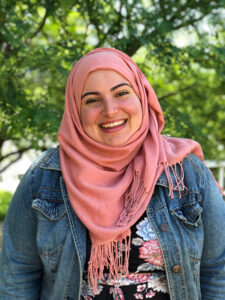
Mouna Algahaithi, PBS Wisconsin Education Engagement Specialists.
What remains constant among Wisconsin’s educators and caregivers is an impassioned commitment to the learning, social and emotional needs of kids — a pledge to deliver the highest quality education to our most vulnerable communities.
This week, we caught up with Mouna Algahaithi, one of our favorite PBS Wisconsin Education Engagement Specialists. Mouna is charged with creating and facilitating standards-aligned educational experiences for Wisconsin’s littlest learners, PreK to second grade.
We asked Mouna about her management of an early learning pilot program in Monroe and Vernon counties — a partnership with PBS KIDS and the Corporation for Public Broadcasting’s (CPB) Ready to Learn initiative.
We wanted to know more about the project and how educators and caregivers statewide can employ Ready to Learn resources to bolster kids’ curiosity and confidence this fall.
Q: For background, what is Ready to Learn?
A: Ready to Learn (“RTL”) is a Corporation for Public Broadcasting (CPB) initiative funded by the U.S. Department of Education Ready to Learn Television grant.
The initiative’s primary goal is achieving school readiness for pre- and elementary school (ages 2-8) children, particularly those in low-income communities who need more help accessing the basic early learning skills to succeed in school long-term.
RTL focuses on introducing key STEM (Science, Technology, Engineering and Math) and literacy concepts early in a child’s development. To do this, the CPB and PBS partnered to create brand new science and literacy-based television series, videos, games, mobile apps, and educator engagement resources.
Q: Where does PBS Wisconsin Education come in?
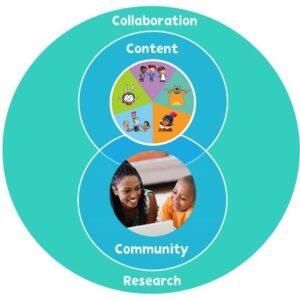
Ready to Learn collaboration and delivery model
A: PBS Wisconsin Education is a partner in the implementation and community-educator engagement phase of Ready to Learn. We received a grant (Ready To Learn Community Collaboratives for Early Learning & Media) from the CPB — to team up with local educational partners to utilize the full suite of Ready to Learn resources with kids in their communities.
Q: Who did you team up with and why?
A: We partnered with the rural communities of Cashton and Westby, along with neighboring communities in the Kickapoo Valley — specifically the Cashton School District, Westby Area School District, Cashton Memorial Library and Bekkum Memorial Library.
Wisconsin’s rural communities – taken together – form a large portion of our state, and many have a significant need for STEM and literacy resources for their youngest learners. We were excited to model an RTL collaborative in Westby and Cashton and learn to scale it to rural communities statewide.
Q: In general, what does a Ready to Learn programming event look like?
During an event, we typically read a story, watch a PBS KIDS (RTL-developed) series episode together, play a corresponding PBS KIDS game, share a meal together, and follow up with a hands-on activity that matches the learning goals of the episode.
We rely substantially on the amazing Ready to Learn activity guides developed by education specialists at PBS. Each of these combines curated multimedia RTL resources, STEM learning goals, and a step-by-step activity that is designed to use low-cost resources one could likely find at home.
It’s thrilling for the kids to connect with the characters in PBS’s RTL-developed TV series — Molly of Denali, The Ruff Ruffman Show, The Cat in the Hat Knows a Lot About That!, Ready Jet Go!. Every episode is developed with embedded, standards-aligned STEM literacy goals!
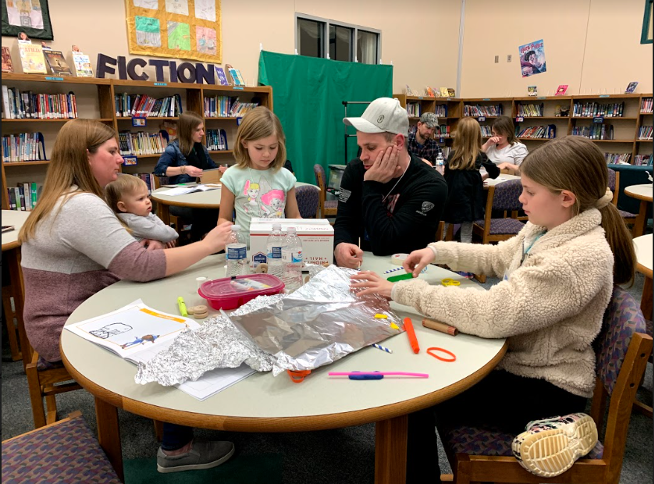
A family works on building spacesuits for their stuffed animals at a Ready Jet Go Family & Community Learning event hosted by PBS Wisconsin, Westby Elementary and Westby Bekkum (at Westby Elementary, February 2020).
Q: Can you walk us through a specific event?
A: Sure! I’ll describe a Ready to Learn event we recently adapted and conducted virtually with the Bekkum Memorial Library in Westby. We worked with two lead library staff — Michelle Tryggestad, Director, and Marin Ball, Youth Services Coordinator.
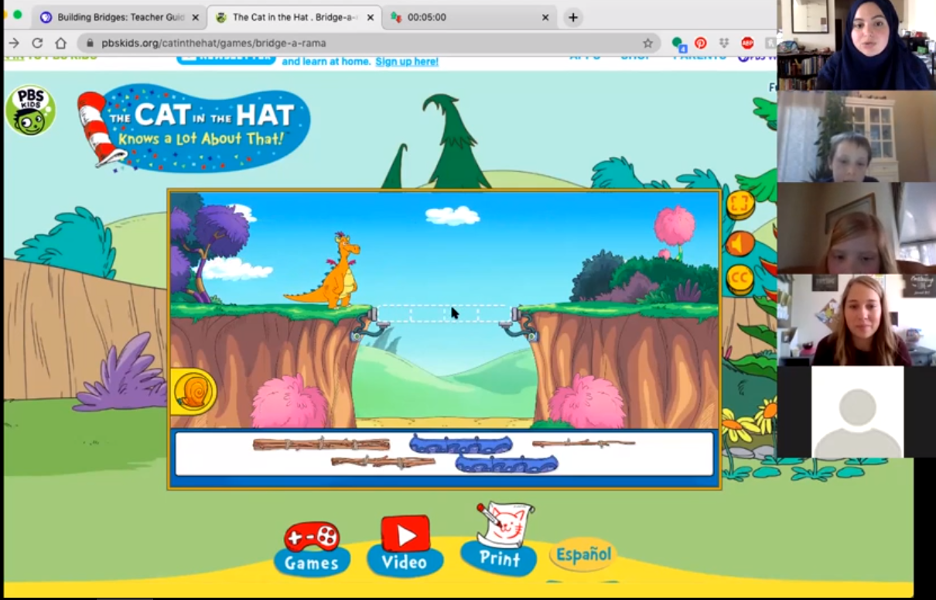
Screen-grab of Mouna modeling Bridge-a-Rama with participants, 4/30/2020
The overarching STEM topic was “bridges” (physical bridges like the Brooklyn Bridge or a footbridge over a pond, not “bridge” as metaphor.)
We applied a 4-pronged approach: 1) Explore, 2) Imagine, 3) Create and 4) Share.
Explore
We began discussing bridges — what they are and different types we’ve seen. We looked at examples of bridges from around the world and read the picture book, A Book of Bridges: Here to There and Me to You, written by Cheryl Keely, illustrated by Celia Krampien.
Next, we watched an episode of The Cat in the Hat Knows a Lot About That! called “Building Bridges,” in which the characters Nick, Sally and The Cat in the Hat explore different bridges and their strength or structural integrity. Young learners are exposed to new vocabulary words including “sturdy” and “engineer.” We also played a PBS KIDS game called “Bridge-a-Rama,” which prompts children to practice building different bridges online.
With that foundation set, we began our hands-on activity which encompassed the “Imagine,” “Create” and “Share” prongs of the lesson.
Imagine
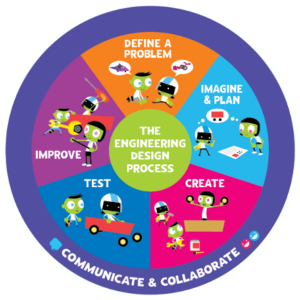
Model of the Engineering Design Process
We introduced the Engineering Design Process, which involves 5 steps: Define a Problem, Imagine & Plan, Create, Test and Improve.
Our imaginary problem was that we urgently needed to build a bridge for our friends Nick and Sally. Before engineers can fabricate their solutions, they need a plan! We prompted the kids to take five minutes (we used an online timer) to come up with their bridge building plan, using materials they had in their home. Before they gathered the materials, they had to write (or draw) their materials list and a sketch of the bridge they imagined.
Create
After the kids fetched their materials — an assortment of clothespins, cardboard, paper, tape and pipe cleaners — we set the online timer to 15 minutes for the building portion. We built alongside the students and stayed available to answer questions.
Share
Finally, we all shared our creations! Kids discussed what challenges they faced and how they overcame them. We posed questions like: “Why did you choose to use that specific material?” and “Did your bridge turn out the way you imagined? What could you do to make it even stronger?”
The children were excited to share what they built. If they weren’t satisfied with the outcome, we encouraged them to continue improving their bridge offline.
Q: How do you measure the success of these events?
These have been small, intimate experiences, especially those delivered virtually which benefit from having smaller participant numbers — we recommend about 10. So we take in a lot of rich, qualitative indicators.
We’re excited to see the kids engaged and enthusiastic for the full 1.5 hours of the event, asking thoughtful, energized questions and expressing how much fun they were having.
I think we can credit this to quick transitions from one activity to another and the excitement of including beloved PBS KIDS characters.
Marin from Bekkum library refers to the building and sharing portions of the “Bridges” program as her favorite: “This was always the turning point, where the kids took ownership of what we were learning about,” she said. “They were so excited to get creative and try out their ideas, and while I believe the story and episode were instrumental in preparing them to explore the concept for themselves, I also think that kids are more likely to remember hands-on experiences.”
Q: How can Wisconsin educators replicate Ready to Learn with their students this fall?
A: I’m so glad you asked! First I want to clarify that anyone who loves and cares for a kid can execute a Ready to Learn activity in any setting — classroom, library, home, daycare.
This interview is great timing because I recently conducted a webinar that readers can access below, modeling for librarians how they can use the Ready to Learn Activity Guides. But the webinar applies to all educators and caregivers.
In the webinar I talk about delivering an RTL program virtually. What we heard from educators, who are now acculturated to at-home learning, is about kids feeling burn-out and teachers experiencing exhaustion.
We learned to constantly keep the following question in mind: How can we engage with communities virtually without exaggerating educator, caregiver, and kid fatigue? The pacing and hands-on aspects of the program really help with that.
Q: Are there any other reflections you’d like to share?
A: Kurt Vonnegut said, “Science is magic that works.” Ready to Learn is showing us that empowering children — especially those in under-resourced communities — to explore science and engineering hands-on debunks the myth that these are difficult to comprehend classroom subjects.
A report by the Education Development Center (EDC) and Stanford Research Institute (SRI) on Ready To Learn content showed that children participating in these events have an increased interest in science. Young learners gain confidence in themselves as scientists and engineers and embrace their world with a curious lens and increased resourcefulness.
We need a universal commitment to remove barriers for all learners. We need an equal commitment to producing opportunities for children to explore the magic of science with the same courage that our favorite fairy tale characters employed to slay dragons and seize the day!
If educators or caregivers in our audience are interested in learning more about Ready To Learn content, and how to incorporate it into learning this fall, let’s connect! Email me at [email protected].
 Passport
Passport




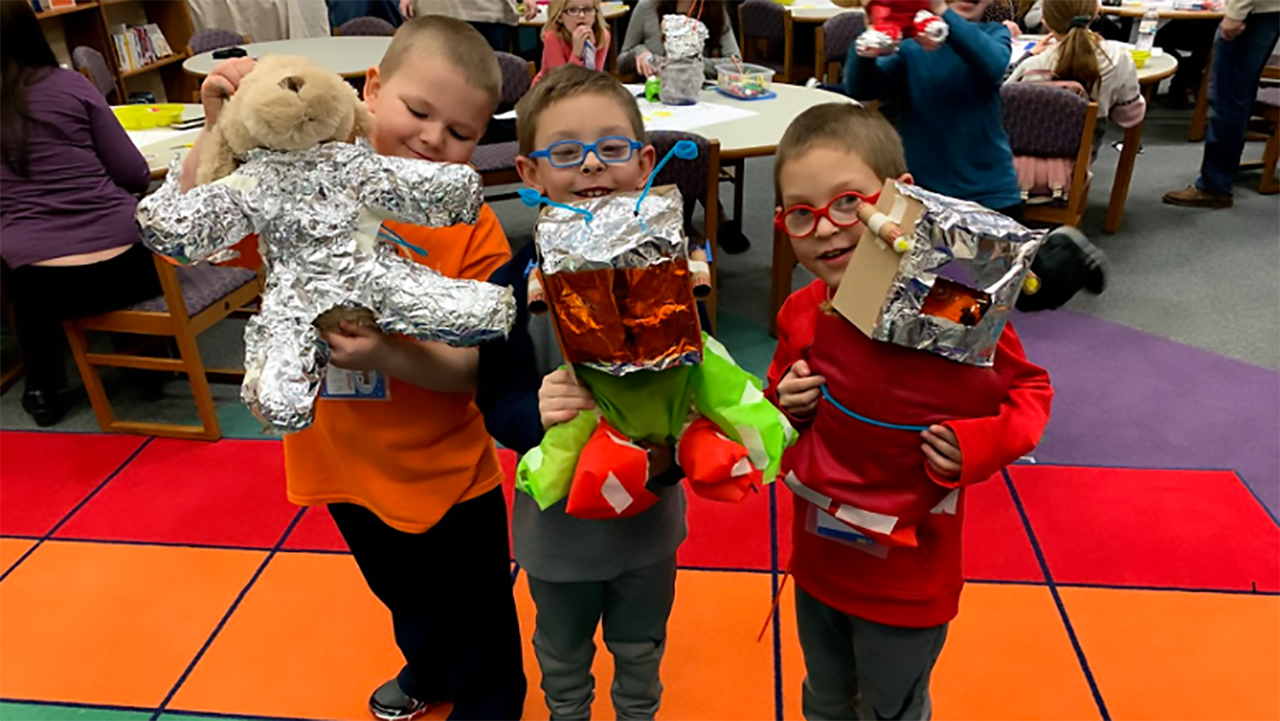

Follow Us